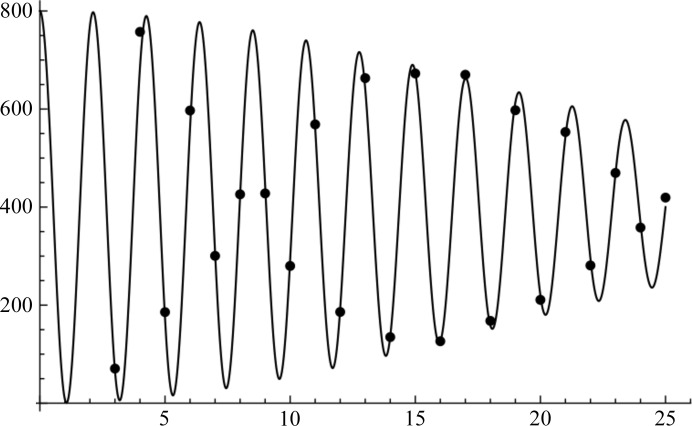Figure 3.
Comparison of predicted average intensity (line) with simulated average intensity (points). The crystal is equivalent to that used for Fig. 2 ▶, except that the two copies differ by a rotation of 2° around the x axis and an r.m.s. coordinate difference of 0.5 Å. Each point (corresponding to a 00l reflection) is obtained by carrying out 1000 simulations in which 200 atoms are generated randomly within the spherical envelope of the first molecule (centred on the origin); the second copy is then generated by perturbing these atomic positions followed by rotation and translation. The points for the first-order and second-order reflections are omitted because the assumptions behind the Wilson (1949 ▶) distribution are violated when the Bragg spacings are large compared with the size of the molecular envelope.

